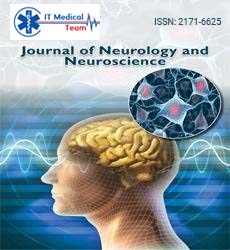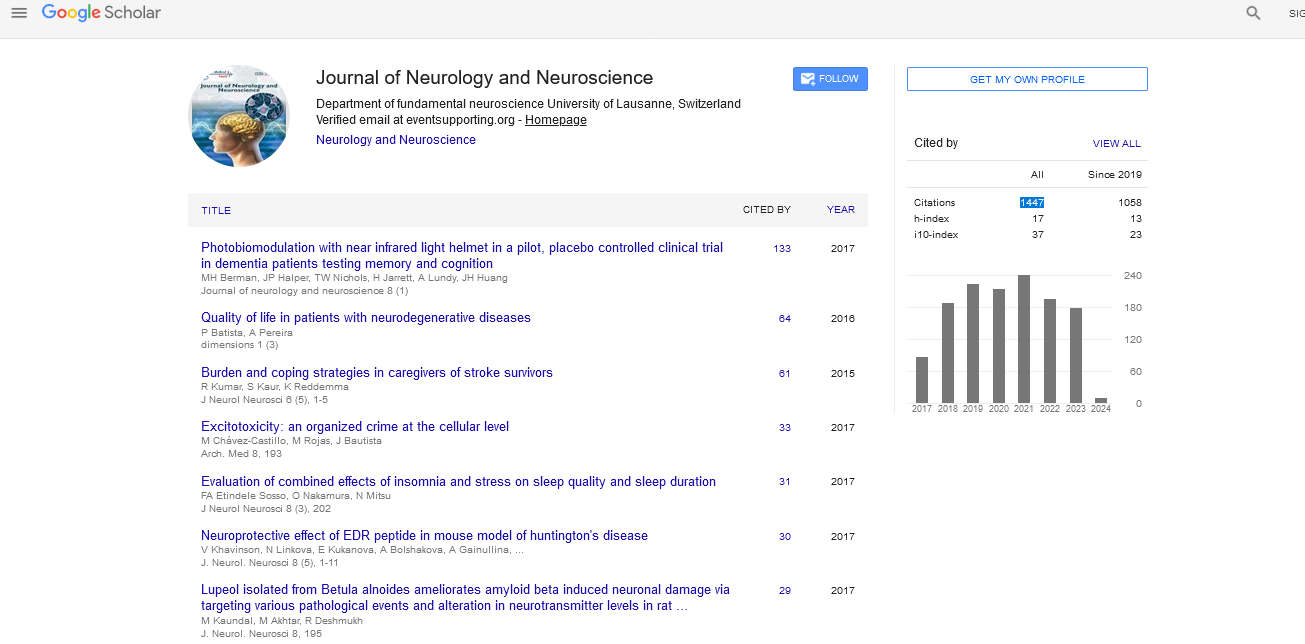Brief Report - (2024) Volume 15, Issue 6
Exploring the complexities of arrhythmia management
Wakin Delim*
1Department of Neurology, Nicolaus Copernicus University, Toru?, Poland
*Correspondence:
Wakin Delim, Department of Neurology, Nicolaus Copernicus University, Toru?,
Poland,
Email:
Received: 27-Nov-2024, Manuscript No. ipjnn-25-15492;
Editor assigned: 29-Nov-2024, Pre QC No. P- 15492;
Reviewed: 13-Dec-2024, QC No. Q-15492;
Revised: 18-Dec-2024, Manuscript No. R-15492;
Published:
25-Dec-2024
Abstract
Arrhythmia, defined as an abnormal heart rhythm, is one of the most prevalent and challenging cardiovascular conditions worldwide. It refers to any irregularity in the electrical impulses that coordinate the heart’s rhythm, leading to disturbances in the heartbeat rate or pattern. While some arrhythmias are benign and may not require extensive treatment, others can be life-threatening, significantly affecting the patient’s health and quality of life. Managing arrhythmia requires a multifaceted approach that includes accurate diagnosis, timely intervention, and long-term care strategies. The complexities of arrhythmia management arise from the diverse types of arrhythmias, the intricacies of treatment options, and the need for individualized care plans. This article delves into the key challenges of arrhythmia management, focusing on diagnosis, treatment, patient factors, and long-term care
INTRODUCTION
Arrhythmia, defined as an abnormal heart rhythm, is
one of the most prevalent and challenging cardiovascular
conditions worldwide. It refers to any irregularity in
the electrical impulses that coordinate the heartâ??s
rhythm, leading to disturbances in the heartbeat rate
or pattern. While some arrhythmias are benign and
may not require extensive treatment, others can be lifethreatening, significantly affecting the patientâ??s health
and quality of life. Managing arrhythmia requires a
multifaceted approach that includes accurate diagnosis,
timely intervention, and long-term care strategies. The
complexities of arrhythmia management arise from the
diverse types of arrhythmias, the intricacies of treatment
options, and the need for individualized care plans.
This article delves into the key challenges of arrhythmia
management, focusing on diagnosis, treatment, patient
factors, and long-term care [1].
DESCRIPTION
Arrhythmias can be broadly classified into two categories, tachyarrhythmias (abnormally fast heart rhythms) and bradyarrhythmias (abnormally slow heart rhythms). Within these categories, there are numerous subtypes, each with distinct characteristics and varying levels of severity. Common arrhythmias include Atrial Fibrillation (AF), Ventricular Tachycardia (VT), and bradycardia caused by sinus node dysfunction or heart block. The first challenge in arrhythmia management is achieving an accurate diagnosis, as arrhythmias often present with symptoms that overlap with other cardiovascular and non-cardiovascular conditions. Symptoms such as palpitations, dizziness, chest discomfort, or shortness of breath may be indicative of an arrhythmia but can also be seen in anxiety, hyperthyroidism, or even gastrointestinal disorders. The primary diagnostic tool for arrhythmias, providing a detailed record of the heart’s electrical activity. Continuous 24- to 48-hour ECG monitoring, helpful in detecting intermittent arrhythmias that may not appear during a standard ECG. Electrophysiological Study (EPS) that maps the electrical pathways of the heart, used to identify the source of arrhythmias, especially in complex cases like ventricular arrhythmias. Advanced imaging, such as echocardiograms or MRI, may be necessary to evaluate structural heart abnormalities contributing to arrhythmias [2]. These diagnostic tools help clinicians identify the precise type and origin of arrhythmia, which is critical for determining the most effective treatment. However, the diversity of arrhythmic conditions can make diagnosis complex, especially when patients present with atypical symptoms or when arrhythmias are paroxysmal 15 (06) 2024 : 001-002 • 2 − © J Neurol Neurosci 1. Resnekov LE, McDONALD LA. Complications in 220 patients with cardiac dysrhythmias treated by phased direct current shock, and indications for electroconversion. Br Heart J. 1967; 29(6):926. 2. Royster RL. Arrhythmia or dysrhythmia: Let's standardize our nomenclature. Anesth Analg. 1990 Jan 1; 70(1):125-126. 3. Goette A, Kalman JM, Aguinaga L, et al. EHRA/HRS/APHRS/ SOLAECE expert consensus on atrial cardiomyopathies: Definition, characterization, and clinical implication. Europace 2016; 18(10):1455-1490. 4. Parkman HP, Hasler WL, Barnett JL, et al. Electrogastrography: A document prepared by the gastric section of the american motility society clinical gi motility testing task force. Neurogastroenterol Motil. 2003 Apr; 15(2):89-102. 5. Snell J, Yeaton J, Mirault J, et al. Parallel word reading revealed by fixation-related brain potentials. Cortex. 2023; 162:1-1. (intermittent). Once diagnosed, the management of arrhythmia often involves a combination of pharmacological and non-pharmacological interventions. The treatment strategy depends on several factors, including the type of arrhythmia, the patient’s underlying health condition, and the severity of symptoms. Class I (Sodium Channel Blockers): Used to control the electrical activity of the heart, often effective for atrial and ventricular arrhythmias. Class II (Beta Blockers) reduce the heart rate and are commonly prescribed for conditions like atrial fibrillation, especially when associated with rapid ventricular rates. Class III (Potassium Channel Blockers) help to prolong the heart's repolarization phase and are typically used for ventricular arrhythmias or atrial fibrillation. Class IV (Calcium Channel Blockers) are effective for controlling atrial arrhythmias by slowing the conduction through the Atrioventricular (AV) node [3,4]. Arrhythmia management is not limited to acute interventions; long-term care is critical for preventing recurrence and improving the patient’s overall health outcomes. Regular follow-up visits are essential to monitor for potential complications, such as arrhythmia recurrence, drug side effects, or device malfunction. For patients who have undergone catheter ablation or have pacemakers or ICDs, routine checks are needed to assess the success of the procedure or the functionality of the device. Lifestyle modifications, including regular exercise, a heart-healthy diet, and smoking cessation, are also important aspects of long-term care. Patients with arrhythmias are at higher risk for other cardiovascular issues, including heart failure and stroke, making these preventive measures crucial for improving their prognosis [5].
CONCLUSION
Managing arrhythmias is a complex and dynamic process that requires a tailored approach for each patient. From accurate diagnosis to personalized treatment plans and long-term follow-up, managing arrhythmias involves addressing numerous challenges. The multifaceted nature of arrhythmia care demands a collaborative approach among healthcare providers and continuous advancements in medical technology and treatment strategies. Ultimately, the goal is to improve outcomes, enhance the quality of life, and reduce the risks associated with arrhythmias through effective, individualized care.
REFERENCES
<ol>
<li><a name="1" id="1"></a><strong>Resnekov LE, McDONALD LA.</strong> <a href="https://heart.bmj.com/content/29/6/926" target="_blank">Complications in 220 patients with cardiac dysrhythmias treated by phased direct current shock, and indications for electroconversion</a>. <em>Br Heart J</em>. 1967; 29(6):926. </li>
<p align="right"><a href="https://scholar.google.com/scholar_lookup?title=Complications+in+220+patients+with+cardiac+dysrhythmias+treated+by+phased+direct+current+shock,+and+indications+for+electroconversion&author=Resnekov,+L.&author=McDonald,+L.&publication_year=1967&journal=Br.+Heart+J.&volume=29&pages=926&doi=10.1136/hrt.29.6.926&pmid=4228665" target="_blank"><u>Google Scholar</u></a>, <a href="https://doi.org/10.1136/hrt.29.6.926" target="_blank"><u>Crossref</u></a>, <a href="https://www.ncbi.nlm.nih.gov/pubmed/4228665" target="_blank"><u>Indexed at</u></a></p>
<li><a name="2" id="2"></a><strong>Royster RL.</strong> <a href="https://journals.lww.com/anesthesia-analgesia/citation/1990/01000/arrhythmia_or_dysrhythmia__let_s_standardize_our.36.aspx" target="_blank">Arrhythmia or dysrhythmia: Let's standardize our nomenclature</a>. <em>Anesth Analg</em>. 1990 Jan 1; 70(1):125-126.</li>
<p align="right"><a href="https://scholar.google.com/scholar_lookup?title=Arrhythmia+or+Dysrhythmia:+Let%E2%80%99s+Standardize+Our+Nomenclature&author=Royster,+R.L.&publication_year=1990&journal=Anesth.+Analg.&volume=70&pages=125%E2%80%93126&doi=10.1213/00000539-199001000-00036&pmid=2297096" target="_blank"><u>Google Scholar</u></a>, <a href="https://doi.org/10.1213/00000539-199001000-00036" target="_blank"><u>Crossref</u></a>, <a href="https://www.ncbi.nlm.nih.gov/pubmed/2297096" target="_blank"><u>Indexed at</u></a></p>
</ol>





